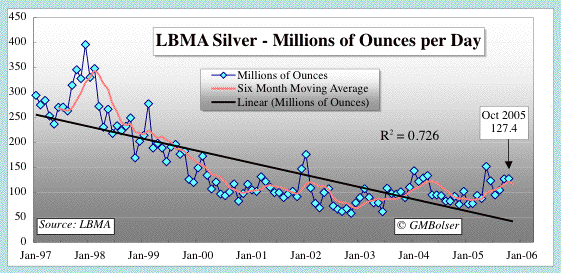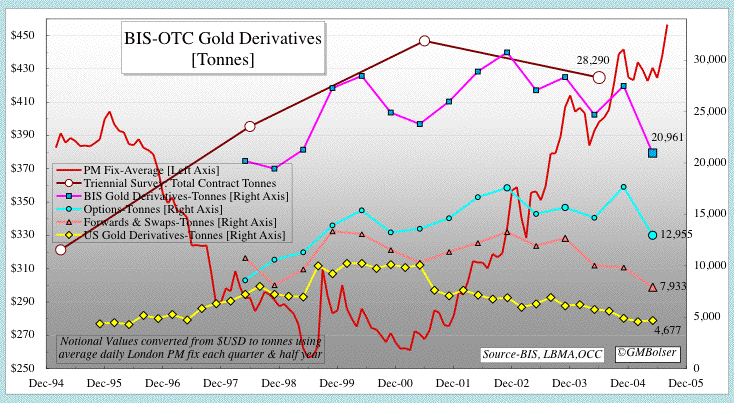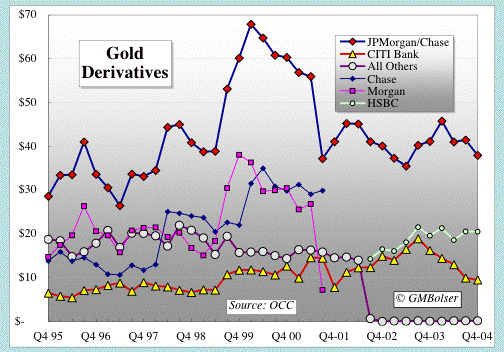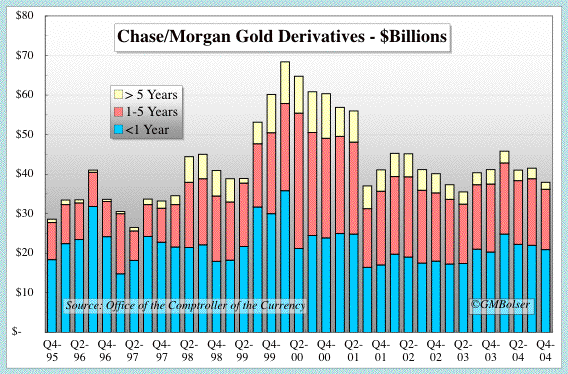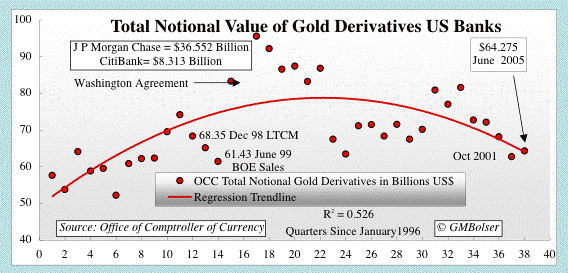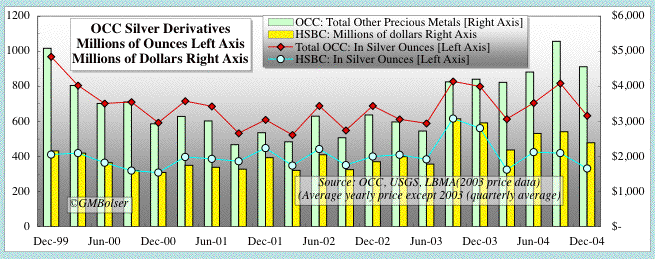Charts
The concept of regression analysis is discussed in Charting the Gold Markets: Regressing to ? (10/8/2000), which introduced this special section to The Golden Sextant. That commentary also introduced Mike Bolser, who is helping the editors with this section. Readers wanting to comment, criticize or ask questions particularly regarding the more technical aspects of the charts can connect with Mike by e-mail: michael.bolser@verizon.net. More recently, Mike has opened a new website at which he posts charts -- some quite elaborate -- relating to various financial markets.
Current Comments (last updated December 12, 2005) Part I. Charts on Derivatives On November 17, 2005, the Bank for International Settlements released its regular semi-annual report on the OTC derivatives of major banks and dealers in the G-10 countries for the period ending June 30, 2005. The total notional value of all gold derivatives fell from $369 billion at year-end 2004 to $288 billion at mid-year 2005. As subsequently detailed in table 22A of the June issue of the BIS Quarterly Review, released December 5, 2005, forwards and swaps decreased from $132 to $109 billion while options fell from $237 to $178 billion. Translated into estimated tonnes, these figures are shown in the chart below by Mike Bolser.
Also shown in tonnes are the gold derivatives held by U.S. commercial banks as reported at June 30, 2005, by the Office of the Comptroller of the Currency (www.occ.treas.gov/deriv/deriv.htm). Held almost entirely by J.P. Morgan Chase, HSBC USA and Citibank, the total notional value of these gold derivatives has declined over the past several quarters.
For commentary on this most recent data, see Gold Derivatives: Footprints of Retreat (12/11/2005).
The notional value in dollars of gold derivatives held by U.S. commercial banks are summarized by bank in the chart below, which also includes the year-end 2004 data released by the OCC last March. However, because the derivatives of investment banks (e.g., Goldman Sachs and Morgan Stanley) and others (e.g., American International Group) are not included in the OCC reports, they do not give a complete picture of all gold derivatives held by major U.S. banks and dealers. Although Chase Manhattan Bank and Morgan Guaranty Trust were merged at year-end 2000 into J.P. Morgan Chase, their derivatives were reported separately until the last quarter of 2001.
The second chart details the maturities of the gold derivatives at J.P. Morgan Chase, by far the dominant U.S. player in this arena. The third chart in this section is a regression chart based on the gold derivatives reported by the OCC.
The following chart on silver derivatives updates the similar chart discussed in Targeting the Gold Cabal with Silver Bullets (2/17/04).
Part II. Charts on Markets The first regression chart shows the average daily clearing volume in ounces transferred through the London Bullion Market Association for each month beginning with March 1996, the first month for which this data is available. Accordingly, and because other comparable data on gold derivatives also commences at around the same time, January 1996 suggested itself as a good starting date for the entire set of charts.
Average daily silver volume on the LBMA is shown on the following chart.
